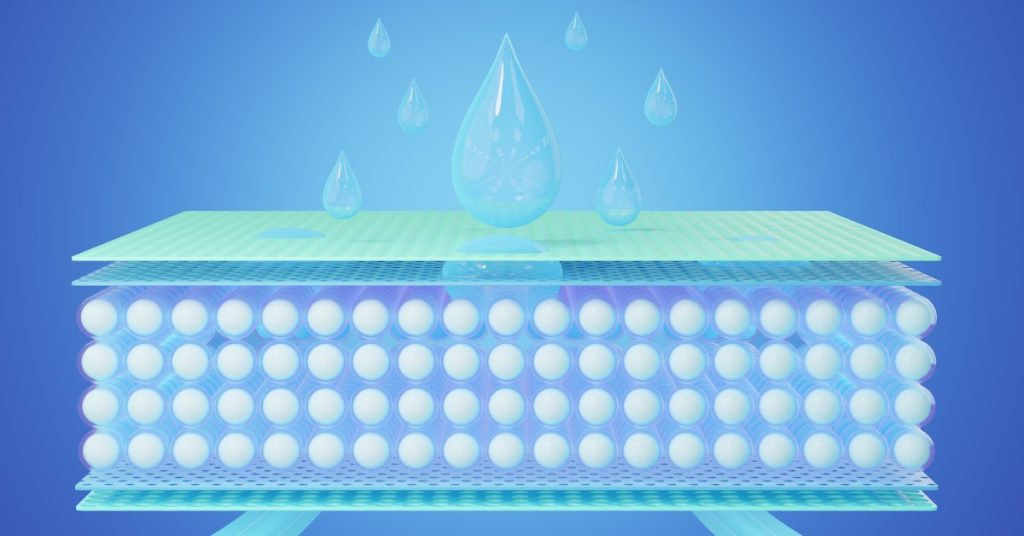
How to Prevent Moisture Under Mattress?
Discover expert tips on preventing moisture buildup under your mattress. Learn effective strategies to keep your sleeping environment dry and comfortable.
Are you tired of waking up with a stiff back or feeling like your mattress is slowly turning into a swamp? Moisture under your mattress can be a real nuisance, causing discomfort, allergies, and even damaging your mattress. But fear not, dear sleeper, for we’ve got the solutions to keep your mattress dry and your sleep peaceful. In this article will give you simple tips to keep your mattress clean and cozy, help you sleep better, and make sure your sleeping spot stays healthy.
Why Moisture Under the Mattress is a Problem ?
Table of Contents
ToggleUncomfortable Sleep:
A damp mattress can make your sleep uncomfortable, leading to aches and pains. You might wake up feeling stiff, tired, and grumpy.
Mold and Mildew:
Moisture creates the perfect breeding ground for mold and mildew. These microorganisms can trigger allergies, asthma, and other respiratory issues.
Mattress Damage:
Excess moisture can damage your mattress, reducing its lifespan and affecting its performance. This can lead to sagging, dips, and an uneven sleeping surface.
Pests and Insects:
Moisture attracts pests like bed bugs, dust mites, and other insects that can infest your mattress and cause discomfort.
Common Causes of Moisture Under the Mattress
Sweat:
Humans sweat, and a significant amount of that sweat ends up on the mattress. This is especially true for people who tend to sleep hot or live in humid climates.
Humidity:
High humidity in the room can cause moisture to accumulate under the mattress.
Spills and Accidents:
Accidental spills, pet accidents, or even a leaky roof can introduce moisture under the mattress.
Poor Ventilation:
If your mattress doesn’t have proper ventilation, moisture can get trapped, leading to dampness and mold.
Prevention Methods
Use a Mattress Protector
A mattress protector is a waterproof layer that fits snugly over your mattress. It’s designed to protect your mattress from spills, sweat, and other forms of moisture. Look for a protector made from breathable materials like cotton or bamboo that allow for airflow while keeping moisture out.
Choose a Breathable Mattress
When buying a new mattress, opt for one with built-in ventilation. Look for mattresses with breathable materials, such as memory foam with ventilation channels or innerspring mattresses with breathable layers. These designs allow for airflow, reducing the risk of moisture accumulation.
Use a Bed Frame with Good Airflow
Your bed frame can play a significant role in preventing moisture under the mattress. Choose a frame with slats or a solid platform that allows for airflow. Avoid frames with solid, enclosed bases that can trap moisture.
Keep Your Room Well-Ventilated
Good room ventilation is crucial in preventing moisture buildup under the mattress. Ensure your room has a window or a ventilation system that can exchange stale air for fresh air. This helps to reduce humidity and keep the air circulating.
Use a Dehumidifier
If you live in a humid climate or have a room with poor ventilation, consider using a dehumidifier. These devices can help reduce the humidity levels in your room, making it less conducive to moisture accumulation under the mattress.
Rotate and Flip Your Mattress
Regularly rotating and flipping your mattress can help prevent moisture from accumulating in one spot. This ensures that the mattress dries evenly and reduces the risk of mold and mildew.
Clean Up Spills Immediately
Accidents happen, but it’s essential to clean up spills immediately. Use a clean, dry cloth to blot the spill, and avoid rubbing the area as it can push the moisture deeper into the mattress.
Use a Moisture-Absorbing Product
There are various products available that can absorb moisture under the mattress. These can be placed under the mattress or on top of it to absorb any excess moisture. Look for products specifically designed for this purpose, such as moisture-absorbing pads or powders.
Consider a Mattress with Moisture-Wicking Properties
Some mattresses come with built-in moisture-wicking properties. These mattresses are designed to draw moisture away from the surface, reducing the risk of dampness and mold.
Inspect Your Mattress Regularly
Regularly inspect your mattress for signs of moisture, such as mold, mildew, or dampness. Catching these issues early can help prevent them from becoming major problems.
Final Thoughts
Moisture under the mattress can be a real nuisance, but with the right prevention methods, you can keep your mattress dry and your sleep peaceful. Remember to use a mattress protector, choose a breathable mattress, and keep your room well-ventilated. By following these tips, you’ll be sleeping like a baby in no time. So, go ahead, take control of your sleep environment, and say goodbye to moisture under your mattress.
Frequently Asked Questions
A wet mattress may not dry properly on its own, leading to mold and odors. Use fans, dehumidifiers, and sunlight to aid drying.
Use a mattress protector, elevate your bed, and ensure good airflow. Fix any leaks, use a dehumidifier if needed, and clean under your bed regularly.
Your mattress could be wet underneath due to condensation from moisture in the air or a spill. Make sure to keep it dry!
A waterproof mattress protector keeps moisture away, shielding your mattress for a dry and comfy sleep.
